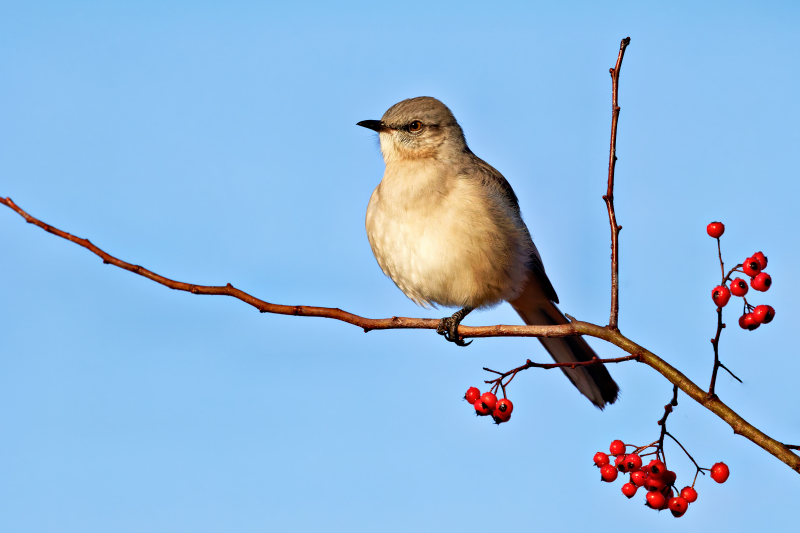I planted a Washington Hawthorn tree several years ago, though I’m not entirely sure when. I received it as a twig from the Arbor Day Foundation. Now, I estimate its height to be around 10 to 15 feet.
This year marks the first time it has produced berries. I’ve read that this tree typically starts bearing fruit when it’s around 5 to 7 years old, so I suppose I’ve had it for that long.
The Northern Mockingbirds absolutely adore this tree. In fact, a couple of years ago, they even built a nest and raised their young there. However, in the past few days, I’ve noticed that they’ve been trying to keep other birds away since the tree now has berries. I’ve even seen the Fox Squirrels in the tree feasting on the berries. It seems the squirrels don’t mind the thorns this tree has.

I’m glad I planted it for the birds. It’s been wonderful to witness the tree’s growth from a twig I received in the mail to a tree now towering over 10 feet tall. It’s also exciting to see it producing berries for the birds.
I chose this tree primarily for its benefits to the birds.
Benefits for Birds:
- Food Source: The vibrant red berries produced in the fall provide a substantial food source for numerous bird species during winter.
- Nesting Habitat: The dense, thorny branches offer secure nesting sites. The thorns deter larger predators, allowing smaller birds to nest safely within the tree.
- Attract Pollinators: The tree’s white flowers bloom in late spring and are rich in nectar, attracting bees and butterflies. This increased insect activity can also attract insectivorous birds.
I’ll keep observing as more wildlife discovers the tree. The Washington Hawthorn has transformed from a simple twig to an essential part of my backyard’s ecosystem—a reliable spot for birds and small animals alike.
Photo Information
- Date: 11/4/24
- Time: 9:05:03 AM
- Camera Model: Canon EOS R5m2
- Lens: Canon RF100-500mm F4.5-7.1 L IS USM
- Focal Length: 500mm
- ISO: 1250
- Aperture: f/8
- Shutter Speed: 1/3200
- Exposure Compensation: +0.7
